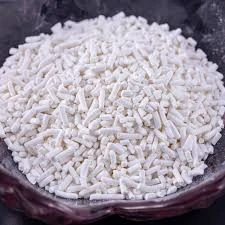
Exploring the Uses and Benefits of Emulsifiers E322 and E471 in Food Production
Understanding Emulsifiers E322 and E471
In the world of food science, emulsifiers play a crucial role in creating stable mixtures of ingredients that typically do not mix well, such as oil and water. Among the numerous emulsifiers used in food processing, E322 and E471 are two notable examples. Both have different origins and functions, contributing to the texture, shelf life, and overall quality of food products.
What is E322?
E322, commonly known as lecithin, is a naturally occurring phospholipid that is primarily derived from soybeans, sunflowers, or eggs. Lecithin acts as an emulsifying agent by reducing the surface tension between oil and water, allowing them to blend together seamlessly. This property makes E322 a favored ingredient in a variety of food products, including chocolates, salad dressings, and baked goods.
The health benefits associated with lecithin have garnered attention in recent years. This emulsifier is rich in choline, a nutrient essential for brain function and liver health. The inclusion of E322 in food products not only enhances texture but also adds nutritional value, making it a popular choice among health-conscious consumers.
What is E471?
On the other hand, E471, known as mono- and diglycerides of fatty acids, is a synthetic emulsifier derived from glycerol and long-chain fatty acids. This emulsifier is commonly used in processed foods to improve texture, prevent separation, and enhance the overall stability of food products. You can find E471 in margarine, ice creams, and snack foods, among others.
One of the significant advantages of E471 is its ability to create a creamy texture in products without altering the flavor. This is particularly important in items like whipped toppings and creamy sauces, where a stable structure is essential for appealing culinary experiences. Furthermore, E471 helps extend the shelf life of products by preventing oil separation and rancidity, making it a valuable asset in food production.
emulsifier 322 471

The Role of Emulsifiers in Food Products
The importance of emulsifiers like E322 and E471 cannot be overstated. They help achieve the desired texture and appearance in food products, which can have a significant impact on consumer preference. For example, a smooth, creamy texture in chocolate or a well-emulsified dressing can elevate the eating experience, leading to higher sales and customer satisfaction.
Additionally, emulsifiers contribute to the economic aspect of food production. By improving product stability, manufacturers can reduce waste and spoilage, ultimately leading to more efficient production processes. This becomes particularly relevant in large-scale food manufacturing, where cost control is paramount.
Safety and Regulations
While E322 and E471 are generally recognized as safe by regulatory bodies like the FDA and the European Food Safety Authority, it is essential for consumers to be aware of their presence in food products. Those with allergies, particularly to soy or eggs (in the case of lecithin), should read labels carefully. With increasing consumer demand for transparency and clean labels, many manufacturers are moving toward more natural emulsifiers or clearly labeling their ingredients for informed choices.
Conclusion
In conclusion, E322 and E471 are two vital emulsifiers that serve essential roles in the food industry. They enhance texture, improve stability, and prolong shelf life while contributing nutritional benefits in the case of lecithin. As consumers become more knowledgeable about food ingredients, the demand for clarity and safety in food production will continue to rise, shaping the future of emulsifier usage in the industry. Understanding these ingredients allows consumers to make more informed decisions regarding their food choices, ultimately leading to a healthier lifestyle.
-
nitrile-rubber-honoring-strict-production-standardsNewsAug.22,2025
-
aspartame-ingredients-honoring-food-safety-valuesNewsAug.22,2025
-
fertilizer-for-balanced-plant-nutritionNewsAug.22,2025
-
cyanide-gold-processing-with-high-purity-additivesNewsAug.22,2025
-
formic-acid-in-textile-dyeing-applicationsNewsAug.22,2025
-
aluminum-hydroxide-gel-in-skincare-productsNewsAug.22,2025
-
Regulatory Compliance for Global Mining Chemicals UseNewsAug.12,2025
Hebei Tenger Chemical Technology Co., Ltd. focuses on the chemical industry and is committed to the export service of chemical raw materials.
-

view more DiethanolisopropanolamineIn the ever-growing field of chemical solutions, diethanolisopropanolamine (DEIPA) stands out as a versatile and important compound. Due to its unique chemical structure and properties, DEIPA is of interest to various industries including construction, personal care, and agriculture. -

view more TriisopropanolamineTriisopropanolamine (TIPA) alkanol amine substance, is a kind of alcohol amine compound with amino and alcohol hydroxyl, and because of its molecules contains both amino and hydroxyl. -

view more Tetramethyl Thiuram DisulfideTetramethyl thiuram disulfide, also known as TMTD, is a white to light-yellow powder with a distinct sulfur-like odor. It is soluble in organic solvents such as benzene, acetone, and ethyl acetate, making it highly versatile for use in different formulations. TMTD is known for its excellent vulcanization acceleration properties, which makes it a key ingredient in the production of rubber products. Additionally, it acts as an effective fungicide and bactericide, making it valuable in agricultural applications. Its high purity and stability ensure consistent performance, making it a preferred choice for manufacturers across various industries.





